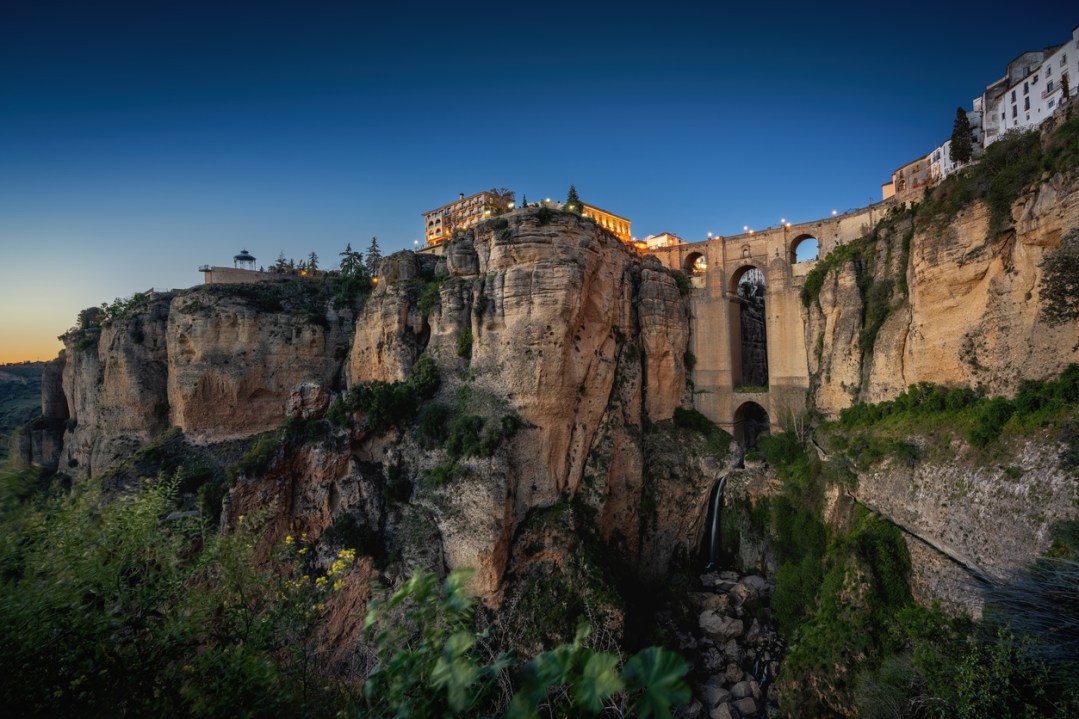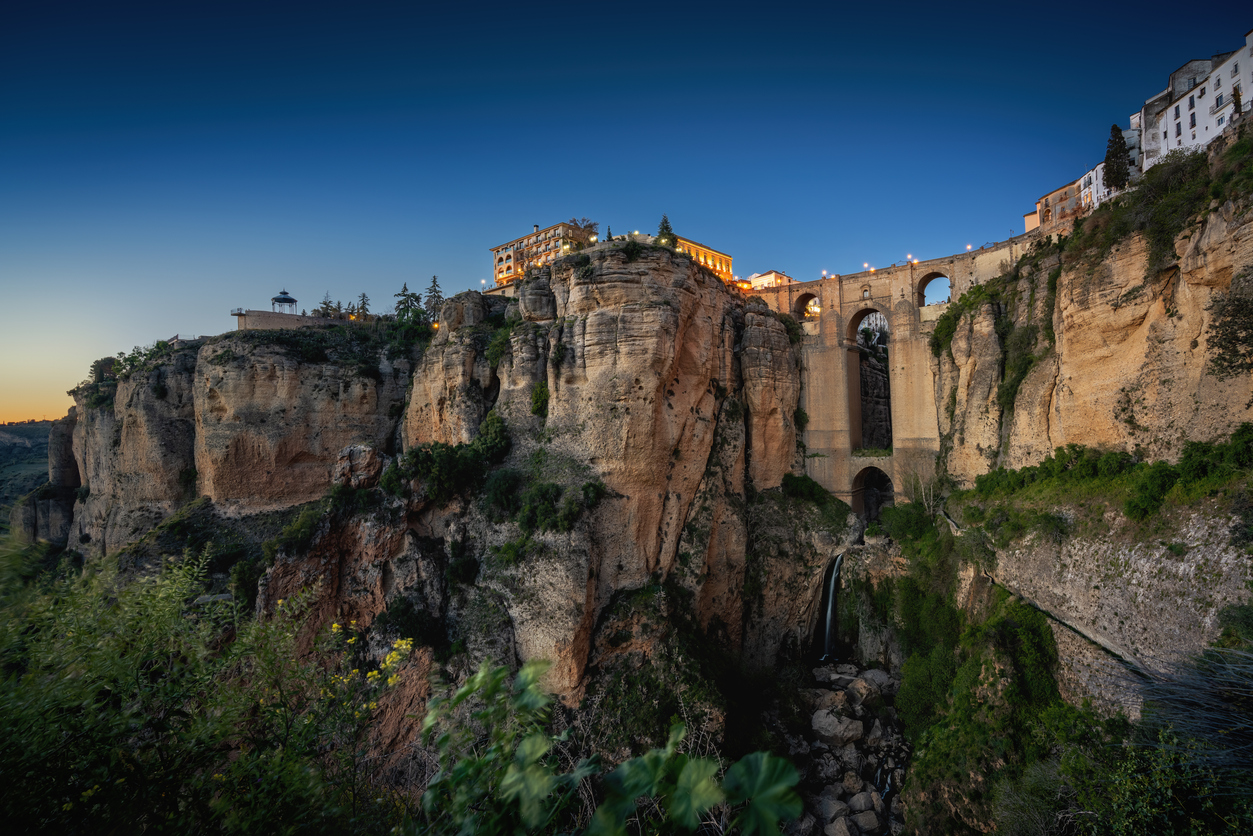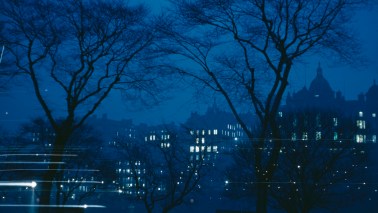‘I have searched everywhere for the “city of dreams” and found it here, in Ronda,’ Rilke wrote. Hemingway was more practical: ‘[Ronda] is where you should go if you ever go to Spain on a honeymoon or if you ever bolt with anyone. The entire town and as far as you can see in any direction is romantic background…’
Sixty miles inland from Málaga, encircled by mountains, Ronda stands on a plateau cut by a steep, narrow gorge some two hundred yards deep. Eroded over a period of five million years by the river that runs through it, this ravine divides the town in two and ends in a sheer cliff drop to the plain below. Cacti and fig trees grow out of its sides; birds wheel and swoop down the chasm to their nests on the rock face.
Built in 1735 in just eight months, a bridge across the ravine collapsed six years later, killing 50 people. Work on the current bridge, made from the same stone as the rock face, began in 1751 and finished in 1793. For a time Ronda boasted that it was the highest bridge in the world.
Hemingway found beauty, danger and death – all ingredients of romance – in the bullring. Only a hundred yards from the bridge and also built in the 18th century, it’s an architectural masterpiece. A ticket to the installations and museum allows you to step into the arena itself where, on 20 May 1820, Curro Guillén, dressed in a pink ‘suit of lights’ embroidered with multicoloured sequins, was fatally gored. He was buried on that exact spot and his remains were only disinterred and removed in 1963.
Comedy offers relief from tragedy. Leaving the ring, I found a French tourist arguing with a policeman. Yes, he conceded, the notice said ‘No parking’ in both Spanish and English – yes, yes, he could see that – but if they didn’t want French-speakers parking, then it should also say so in French, shouldn’t it? ‘When I go to France,’ the policeman replied slowly, head bent over the ticket he was writing, ‘the notices are in French and English.’ He looked up, handed over the fine and smiled: ‘But not Spanish.’
After the bullring I stopped at the Mercedes Convent to see the incorrupt left hand (minus the little finger) of Santa Teresa of Ávila (1515–1582). The explanatory notice fails to relate that, after acquiring the relic during the civil war, General Franco kept it always by his side. Occasionally over the decades the nuns would write to him requesting its return, but Franco, who regarded it as a talisman, never complied, placating them instead with a charitable donation. The hand wasn’t restored to the convent until after the dictator’s death in 1975.
For a time Ronda boasted that it was the highest bridge in the world
For nearly eight centuries – until 1485 – Ronda was a Moorish town. Across the bridge lies the ancient quarter with its narrow, labyrinthine streets, the baths, a minaret and the palace where King Abomelic drank his wine from jewel-studded goblets made from the skulls of his enemies. Below the House of the Moorish King, a secret stairway cut from the rock in the early 14th century descends to a well that’s filled by the river at the foot of the ravine.
Occupied for centuries by the same families, the houses in this part of town – with their tiled patios, fountains and flowers – are rarely, if ever, for sale. Alongside the orange and fig trees are the famous Spanish firs, a species found only in Andalusia. The wild country around Ronda is famous for its remarkable flora and fauna: where else do road signs warn motorists about lynx?
Ronda, Hemingway continues, ‘has everything you wish… romantic scenery… beautiful short walks, good wine, sea-food… practically nothing else to do…’ He forgot to mention the magnificent sunsets that can be enjoyed with a cocktail from the terraces of so many of the bars and restaurants. But he was surely right to conclude that ‘…if a honeymoon or elopement is not a success in Ronda it would be as well to start for Paris and both commence making your own friends’.








Comments